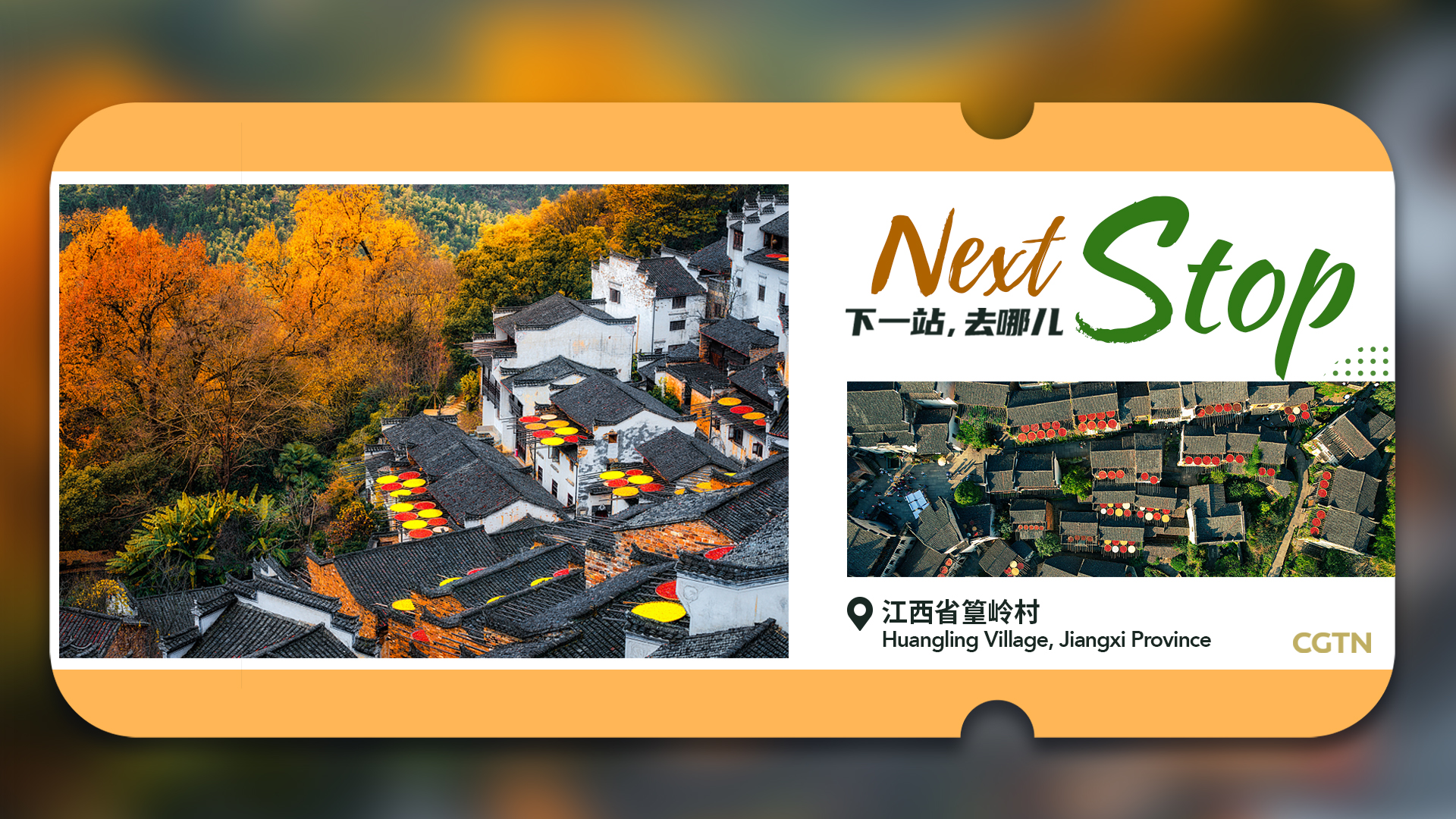Nestled on a 100-meter-tall mountain cliff, Huangling village in Wuyuan County, east China's Jiangxi Province, is a picturesque village with a history of nearly 600 years.
According to the Wuyuan County Annals, the village got its name because of the lush bamboo forests nearby, as "huang" means bamboos and "ling" means mountains in Chinese.
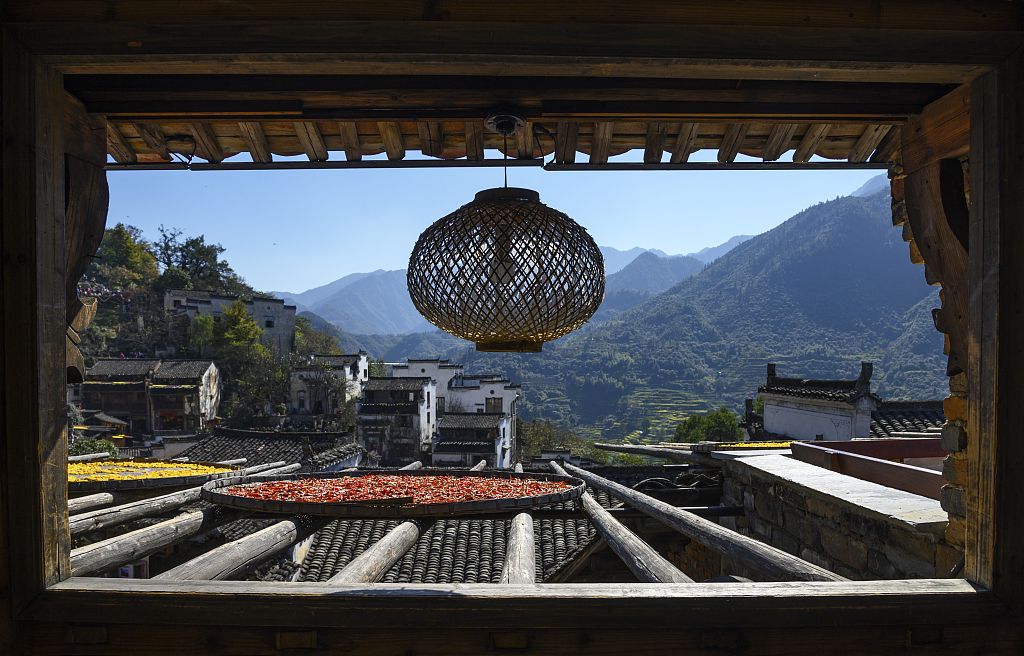
Crops are put in big bamboo baskets and then placed on crossbeams sticking out from the rooftop in Huangling village, Wuyuan County, east China's Jiangxi Province. /CFP
Crops are put in big bamboo baskets and then placed on crossbeams sticking out from the rooftop in Huangling village, Wuyuan County, east China's Jiangxi Province. /CFP
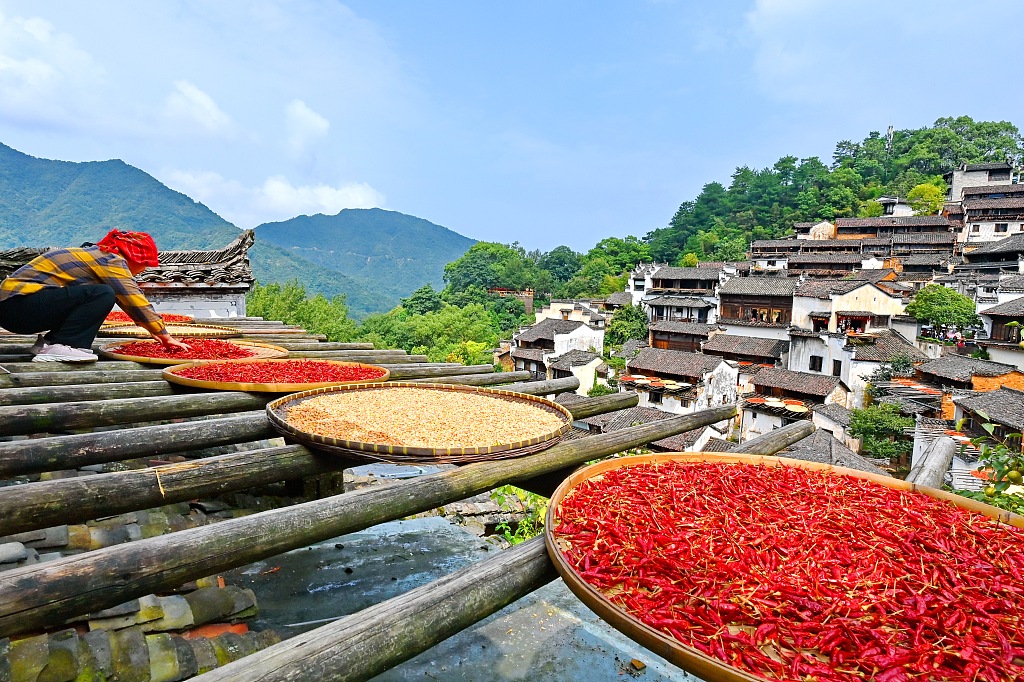
Huangling Village in Jiangxi Province is a bustling rural attraction. /CFP
Huangling Village in Jiangxi Province is a bustling rural attraction. /CFP

Huangling Village in Jiangxi Province is a bustling rural attraction. /CFP
Huangling Village in Jiangxi Province is a bustling rural attraction. /CFP
Due to the rugged terrain, villagers have developed a unique custom of drying agricultural crops on the crossbeams sticking out from the rooftop, which is also known as "shaiqiu" in Chinese.
Traditionally, newly harvested crops of various colors such as chili pepper, corn and rice are put in big bamboo baskets and then placed on the hanging drying ground in autumn. This way, crops can be dried and preserved for winter.
Today, the custom is not limited to autumn, villagers dry tea leaves in spring and eggplants and beans in summer, turning the village into a huge color palette with changing colors according to seasons.
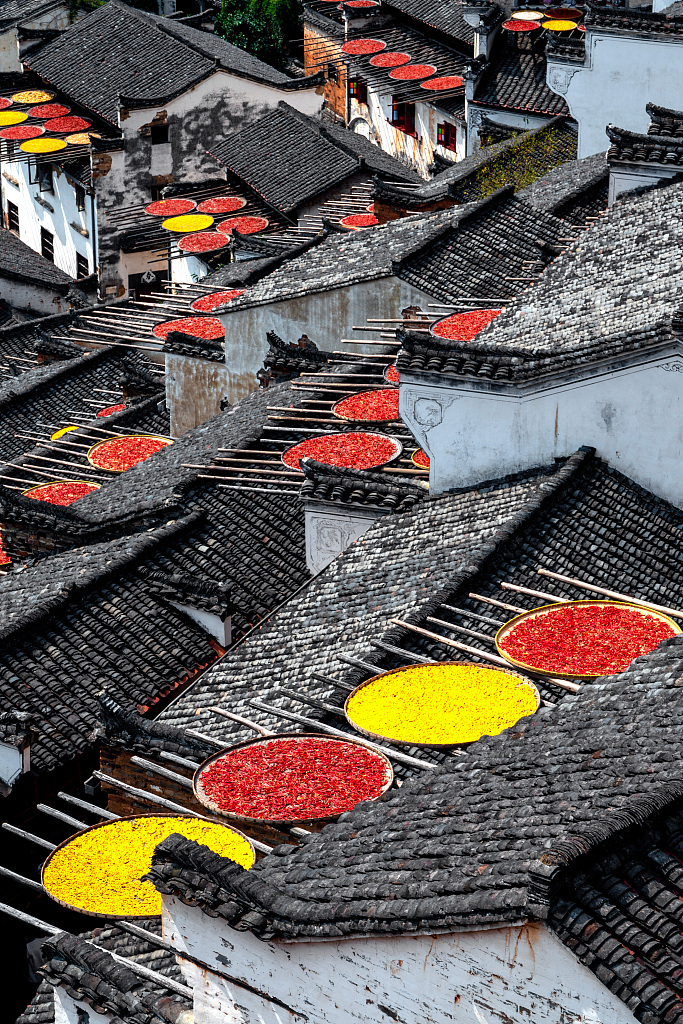
Huangling village in autumn. /CFP
Huangling village in autumn. /CFP
In the past, Huangling village was packed with decaying dwellings and discarded terraced fields. Changes began to occur as it underwent a series of restoration projects since 2009, with over 80 percent of the shabby houses rehabilitated and villagers relocated to new houses at the foot of the mountain.
In just a few years, Huangling transformed from a poverty-stricken village into a rural tourism hotspot. Villagers can rake in tourism-related income from sectors such as accommodation, catering, and transportation.
The annual number of tourists visiting Huangling has increased from 200,000 in 2014 to 1.4 million in 2019. The average annual income per villager increased from 3,500 yuan ($480) before tourism development to over 50,000 yuan ($6,868) currently.
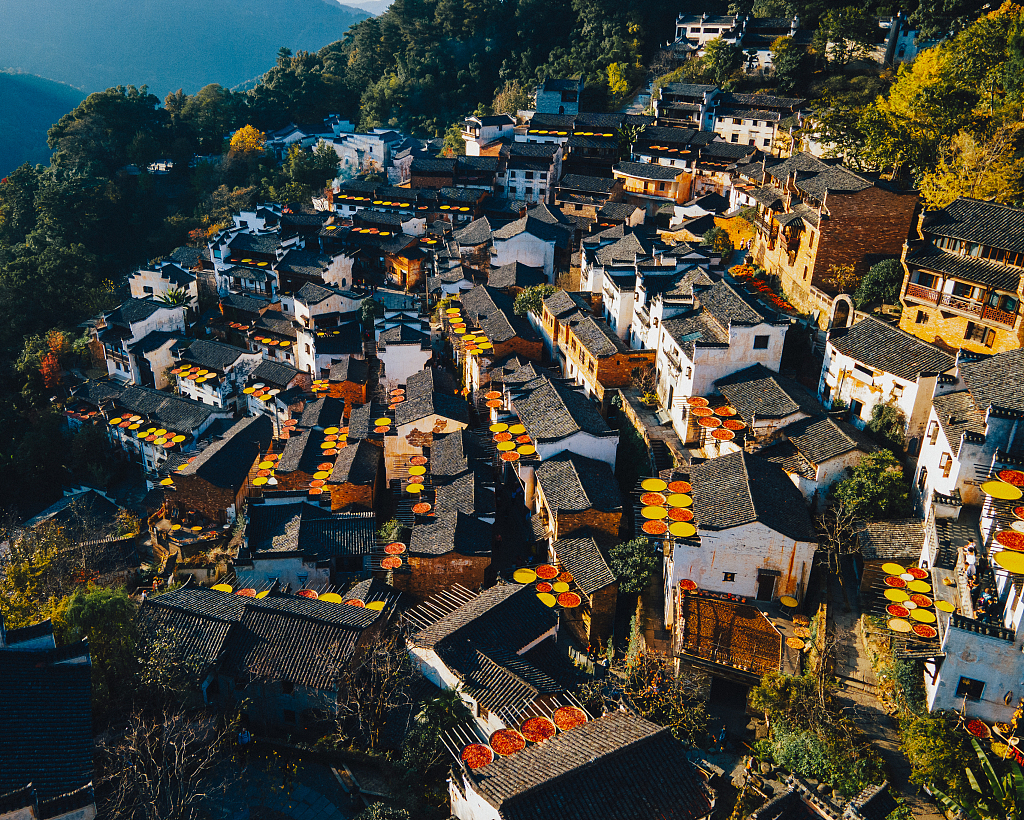
Huangling village in autumn. /CFP
Huangling village in autumn. /CFP
Tourists come here can not only see the iconic rapeseed flower fields in spring and shaiqiu in autumn, but also watch ice sculptures in summer in Wuyuan's first and only indoor ice and snow park.
Today, Huangling Village is gradually gaining global recognition. It has hosted international summits featuring rural tourism and was listed on the "Best Tourism Villages" list for 2023 by the United Nations World Tourism Organization (UNWTO).
(Cover image designed by CGTN's Liang Qian and Zhu Shangfan; with input from Xinhua)

